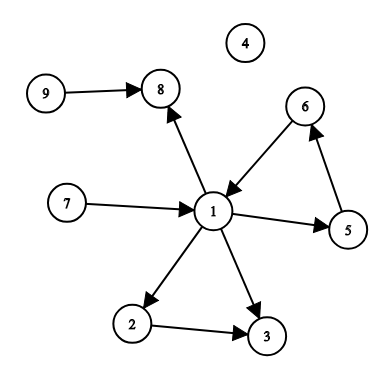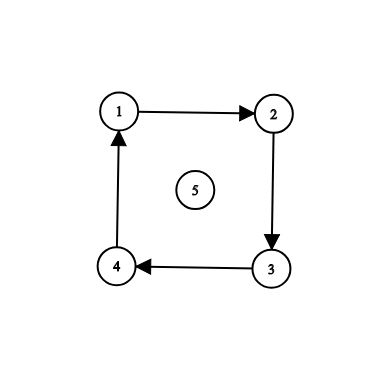Reachability from the Capital
There are n cities and m roads in Berland. Each road connects a pair of cities. The roads in Berland are one-way.
What is the minimum number of new roads that need to be built to make all the cities reachable from the capital?
New roads will also be one-way.
The first line of input consists of three integers n, m and s (1<=n<=5000, 0<=m<=5000, 1<=s<=n) — the number of cities, the number of roads and the index of the capital. Cities are indexed from 1 to n.
The following m lines contain roads: road i is given as a pair of cities u_i, v_i (1<=u_i, v_i<=n, u_i≠v_i). For each pair of cities (u, v), there can be at most one road from u to v. Roads in opposite directions between a pair of cities are allowed (i.e. from u to v and from v to u).
Print one integer — the minimum number of extra roads needed to make all the cities reachable from city s. If all the cities are already reachable from s, print 0.
9 9 1
1 2
1 3
2 3
1 5
5 6
6 1
1 8
9 8
7 1
3
5 4 5
1 2
2 3
3 4
4 1
1
NoteThe first example is illustrated by the following:

For example, you can add roads (6, 4), (7, 9), (1, 7) to make all the cities reachable from s = 1.
The second example is illustrated by the following:

In this example, you can add any one of the roads (5, 1), (5, 2), (5, 3), (5, 4) to make all the cities reachable from s = 5.